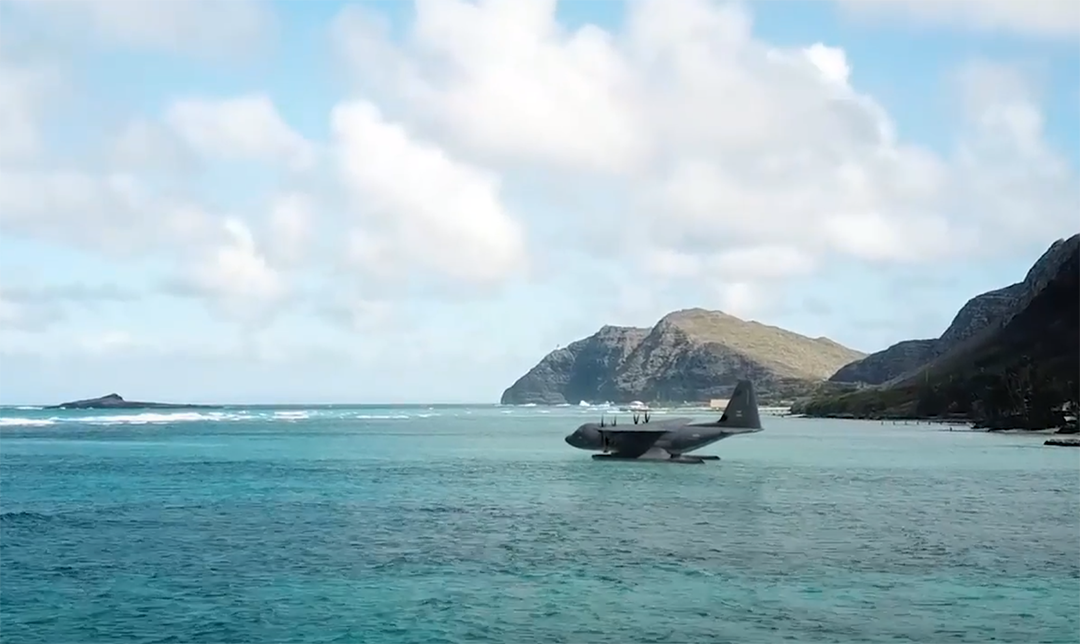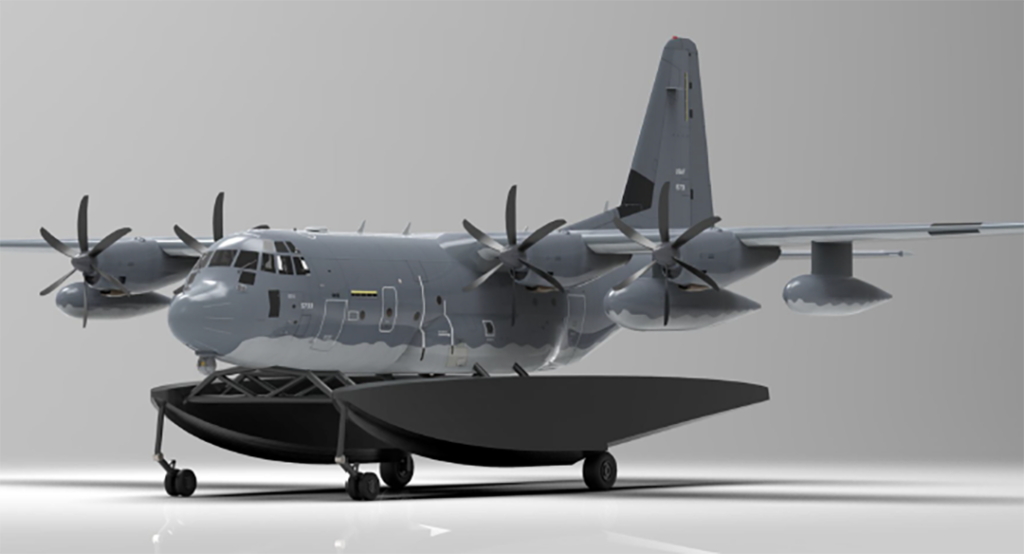THE WATCH STAFF
Those planning for the future of U.S. special operations forces are considering new roles for the aircraft first known as the C-130 Hercules, a venerable air truck that made its inaugural flight in 1954 and already is regarded as the military’s Swiss Army knife.
The C-130 was discussed during the May 2021 Special Operations Forces Industry Conference as a candidate for a program to develop a plane that can take off and land on water. The idea was repeated a year later at this year’s SOFIC, held at the home of Special Operations Command in Tampa, Florida. The military has considered an amphibious plane before, in the 1960s, when Lockheed Martin designed the C-130 Hercules on Water. The aircraft was never built.
Teams with Air Force Special Operations Command (AFSOC) are working to attach removable floats on a C-130 platform under an amphibious development program dubbed MAC. The adaptation would enable “runway independent” operations, extending the global reach and survivability of the aircraft and of air commandos, Lt. Col. Josh Trantham, deputy division chief with AFSOC Science, Systems, Technology and Innovation, said in September AFSOC news report. “Seaborne operations offer nearly unlimited water landing zones providing significant flexibility for the Joint Force.”
It’s an experiment that Col. Ken Kuebler, AFSOC’s fixed-wing program executive officer, calls an engineering challenge for an 82-ton plane but one that could create challenges of its own for U.S. adversaries if it helps deliver special operators to far-flung locations. A number of other potential new capabilities for the C-130, including automation, also were featured during SOFIC, where Kuebler held a “Deep Dive brief” session on fixed-wing advances. Across the 55 programs within his portfolio, Kuebler said, he’s prioritizing autonomous technology to ease the increasing burden on flight crews. This might include a fully automated cockpit — an idea the Air Force is experimenting with now and one that might find its way into future C-130s. “We’ve got the best force ever, but we keep giving them more to do,” Kuebler said. “I’m looking to reduce the crew workload and reduce the number of crews it takes.”

The Air Force also is experimenting with lasers aboard its AC-130 Ghostrider gunships, a C-130 variant that already is armed with 30mm and 105mm cannons and AGM-176A Griffin missiles and can carry Hellfire missiles and GBU-39 small-diameter bombs. Envisioned as a way to defend against incoming missiles when the idea first arose in 2015, lasers now are seen as a potential new weapon in the AC-130’s offensive arsenal.
AFSOC has long relied on the C-130, most recently on adaptations of the C-130J Super Hercules update that entered service in 1998. The C-130J climbs faster and higher than earlier versions, flies farther at a higher cruising speed and takes off and lands in a shorter distance. Two versions operated by AFSOC are the EC-130J Commando Solo and the MC-130J Commando II, both used primarily for clandestine missions at night. The Commando Solo conducts airborne information operations via radio and television broadcasts. The Commando II can deliver, retrieve and supply special operations forces and conduct in-flight refueling of their helicopters and tilt-rotor aircraft. A secondary mission of the MC-130J includes the airdrop of leaflet. AFSOC is using this platform to develop an amphibious aircraft. In 2017, Lockheed Martin also introduced the C-130J-SOF, designed for special operations forces from nations around the world. (Pictured: An artist’s rendering shows the design of a removable twin-float amphibious modification for the MC-130J Commando II.)
In its various iterations, the C-130 is flown in as many as 70 countries, according to Lockheed Martin. The C-130 has the longest, continuous military aircraft production run in history, the company said. More than 70 versions and more than 2,500 of the planes had been ordered or delivered as of 2015. The flexible design of the airframe enables reconfiguration so this one aircraft can perform the role of many. Much of the special-mission equipment added to the C-130 is removable so the plane can revert to its cargo role, if necessary, to carry everything from utility helicopters and six-wheeled armored vehicles to cargo pallets and military personnel.
Once it was introduced, the C-130 quickly became the standard for airlift planes that followed because of its signature features — a single, large cargo ramp aft; a low floor; and four engines mounted on a high wing for taking off and landing in tight spaces and on rough surfaces like dirt, snow and grass. Today’s aircraft are powered by turboprop engines made by Allison or Rolls Royce, depending on the version, turning special, six-blade composite propellers. Among other variants of the plane in use are the stretch fuselage C-130J-30 combat delivery aircraft, the
KC-130J tactical tanker, the U.S. Coast Guard HC-130J search and rescue platform, the Air Force HC-130J for search and rescue as well as an aerial tanker, and the LM-100J commercial Super Hercules. C-130 versions also are used in fighting wildfires.
“One of the C-130’s hallmarks is that it is in a constant state of evolution and adaptability — in large part to meet operator’s demands,” Rich Johnston, a retired Air Force C-130J pilot and now a Lockheed Martin executive, said on the company’s web page. “Evolution is a core part of the C-130’s DNA and I think we will only continue to adapt and expand to meet operator mission requirements.”
IMAGE CREDITS: AIR FORCE SPECIAL OPERATIONS COMMAND

